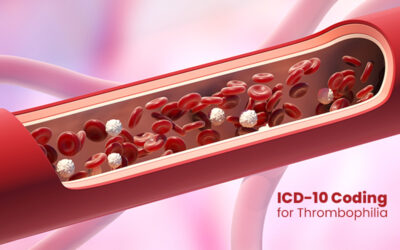According to the National Psoriasis Foundation, up to 30% of people with psoriasis develop psoriatic arthritis (PsA), an inflammatory form of arthritis. It can also occur in people without the skin symptoms of psoriasis. This chronic inflammatory arthritis associated with psoriasis can also be confused with osteoarthritis (OA), the most common form of arthritis. This highly heterogeneous disorder can affect multiple different tissues, including the peripheral joints, skin, axial joints, enthesitis and dactylitis (swelling of a whole toe or finger). As the condition is easy to confuse with other diseases, specialists in musculoskeletal disorders, and rheumatologists are more likely to make a proper diagnosis and advise patients about the best treatment options. Outsourcing medical billing tasks will help these specialists reduce documentation work and focus on patient care.
Typical symptoms are fatigue, nail changes (pitting, white patches) and reduced range of motion of affected joints. PsA can affect any joint in any pattern, and may affect one joint at a time, to start with. Patients are also at the risk of developing further complications such as
- arthritis mutilans which destroys the small bones in the hands
- eye problems such as conjunctivitis, uveitis, and an increased risk of cataracts and glaucoma
- co-morbid conditions – stroke, cardiovascular problems, depression, diabetes mellitus type 2, lymphoma, skin cancer, osteoporosis (especially in men), and hearing loss
Regular appointments with a primary care physician, ophthalmologist, and rheumatologist are critical to keep symptoms, complications, and risk of co-morbid conditions at a minimum. Treatment options include non-steroidal anti-inflammatory drugs (NSAIDs), disease-modifying antirheumatic drugs (DMARDs) (such as Methotrexate) as well as other new medications on the market (such as Otezla).

Rheumatology medical coding involves using diagnosis codes like ICD-10 for documenting PsA. These codes are available in the range of L40.50-L40.59 under psoriasis section such as
- L40 Psoriasis
- L40.0 Psoriasis vulgaris
- Nummular psoriasis
- Plaque psoriasis
- L40.1 Generalized pustular psoriasis
- Impetigo herpetiformis
- Von Zumbusch’s disease
- L40.2 Acrodermatitis continua
- L40.3 Pustulosis palmaris et plantaris
- L40.4 Guttate psoriasis
- L40.5 Arthropathic psoriasis
- L40.50 Arthropathic psoriasis, unspecified
- L40.51 Distal interphalangeal psoriatic arthropathy
- L40.52 Psoriatic arthritis mutilans
- L40.53 Psoriatic spondylitis
- L40.54 Psoriatic juvenile arthropathy
- L40.59 Other psoriatic arthropathy
- L40.8 Other psoriasis
- Flexural psoriasis
- L40.9 Psoriasis, unspecified
While specialists such as dermatologists and rheumatologists focus on treating PsA patients, medical coding services can help them with their medical billing and coding tasks.




